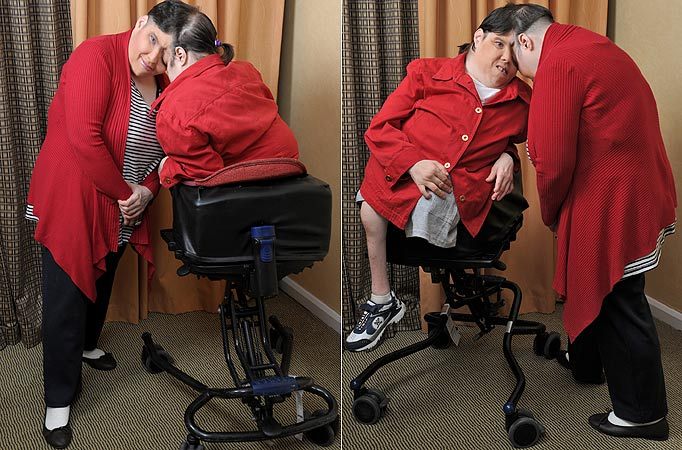

It's believed that when the embryo splits later than this - usually between 13 and 15 days after conception - separation stops before the process is complete. Eight to 12 days after conception, the embryonic layers that split to form monozygotic twins begin to develop into specific organs and structures. Identical twins (monozygotic twins) occur when a single fertilized egg splits and develops into two individuals. In extremely rare cases, one twin may be found partially developed within the other twin (fetus in fetu).

In rare cases, twins may be conjoined with one twin smaller and less fully formed than the other (asymmetric conjoined twins).

The faces are on opposite sides of a single shared head, and they share a brain. Cephalopagus (sef-uh-LOP-uh-gus) twins are joined at the head and upper body. But their brains are usually separate, though they may share some brain tissue. Craniopagus twins share a portion of the skull. Craniopagus (kray-nee-OP-uh-gus) twins are joined at the back, top or side of the head, but not the face. The twins can have two, three or four arms and two or three legs. Parapagus (pa-RAP-uh-gus) twins are joined side to side at the pelvis and part or all of the belly (abdomen) and chest, but with separate heads. Each twin may have two legs or, less commonly, the twins share two or three legs. Many ischiopagus twins share the lower GI tract, as well as the liver and genital and urinary tract organs. Ischiopagus (is-kee-OP-uh-gus) twins are joined at the pelvis, either face to face or end to end. Rachipagus (ray-KIP-uh-gus), also called rachiopagus (ray-kee-OP-uh-gus), twins are joined back to back along the length of the spine. A few twins share the genital and urinary organs. Some pygopagus twins share the lower gastrointestinal (GI) tract. Pygopagus (pie-GOP-uh-gus) twins are commonly joined back to back at the base of the spine and the buttocks. Some twins share the lower part of the small intestine (ileum) and the longest part of the large intestine (colon). Many omphalopagus twins share the liver and some part of the upper digestive (gastrointestinal or GI) tract. Omphalopagus (om-fuh-LOP-uh-gus) twins are joined near the bellybutton. This is one of the most common sites of conjoined twins. They often have a shared heart and may also share one liver and upper intestine.

Thoracopagus (thor-uh-KOP-uh-gus) twins are joined face to face at the chest. Each pair of conjoined twins is unique.Ĭonjoined twins may be joined at any of these sites: The twins sometimes share organs or other parts of their bodies. How twins are joinedĬonjoined twins are usually classified according to where they're joined. Conjoined twins can be diagnosed early in the pregnancy using an ultrasound. And there may be more tiredness, nausea and vomiting early in the pregnancy. As with other twin pregnancies, the uterus may grow faster than it does with a single baby. The second stage then estimates a strand-level hair reconstruction by reconciling in a single optimization process the coarse volumetric constraints with hair strand and hairstyle priors learned from the synthetic data.There are no specific symptoms that indicate a conjoined twin pregnancy. Our method has two stages, with the first stage performing joint reconstruction of coarse hair and bust shapes and hair orientation using implicit volumetric representations. "We propose an approach that can accurately reconstruct hair geometry at a strand level from a monocular video or multi-view images captured in uncontrolled lighting conditions. Truly fascinating stuff for character designers looking to make realistic grooms for their metahumans. 💇♂️ Researchers from Samsung AI, Rockstar Games, Friedrich-Alexander-Universitat, & Cinemersive Labs will be showcasing 'Neural Haircut' at ICCV, a realistic strand-based geometry reconstruction of human hair from monocular video or multiview images.


 0 kommentar(er)
0 kommentar(er)
